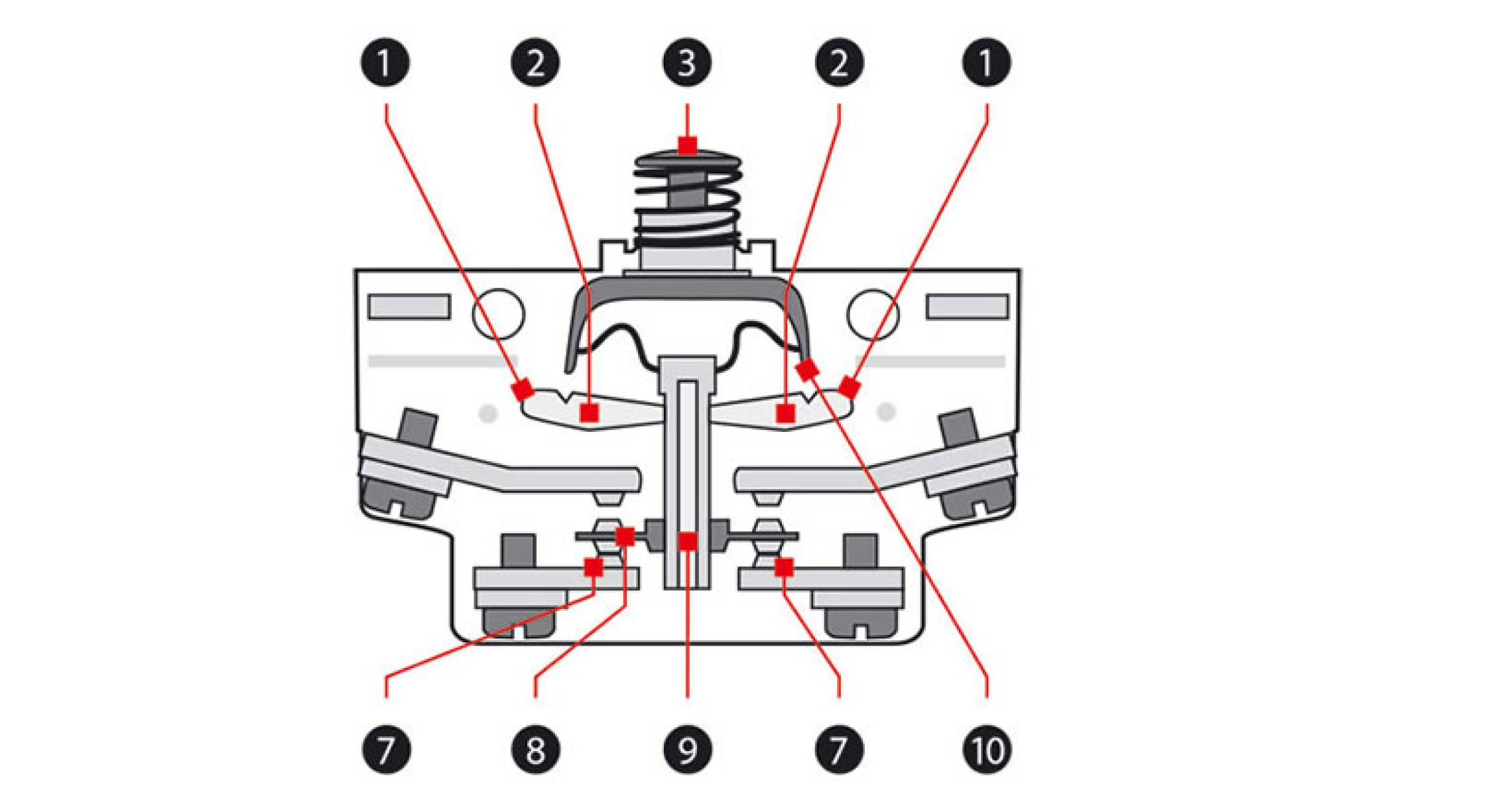Safety for man and machine
Schaltbau snap-action switches are characterized by positive opening operation. That is to say that the components of the snap mechanism are so designed that they also have positive mechanical engagement. Thus it is guaranteed that the contacts of the switch will open even if the snap mechanism fails due to contact welding after a short-circuit or to a broken spring.
This makes the switches ideally suited for use in safety-related applications or for safety components as defined by the European Machine Directive which explicitly require switching elements with positive opening operation for the prevention of accidents.
Positive opening operation: An opening operation which, in accordance with specified requirements, ensures that all the main contacts are in the open position when the actuator is in the position corresponding to the open position of the device
[IEV 441-16-11].
To ensure the proper working of the positive opening operation it is necessary to depress the plunger to the point of total positive opening travel. However, it must not be pressed beyond total travel position.

Phases of the positive opening operation
The movement of the positive opening levers 1 at pivot point 2 causes plunger 9 to move upwards, resulting in the forced disconnection of contact bridge 8 from the normally closed (NC) contacts 7.
- The actuating force is transferred via the tips 10 of the actuator (pushbutton) 3 onto the positive opening levers 1.
- And from there further down to the plunger 9 via pivot point 2 to contact bridge 8 which is supported by the plunger 9.
- It results in a failsafe interruption of the circuit by means of the positive mechanical engagement of the actuator 3 with the contact bridge 8.
Separate construction of snap mechanism and contact system
The snap mechanism and the electrical contact system of the switch are constructed separately in many series. One advantage of the separate construction is, for instance, that it prevents the spring characteristics of the snap mechanism from being impaired by rising current heat.